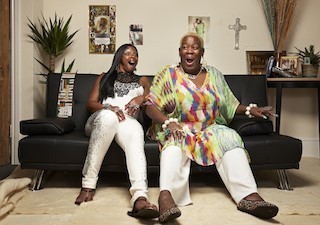When we are on stage, we are in the here and now.
—Konstantine Stanislavski
In a pivotal scene of Fringe’s “Over There,” Part 1 (2.21), Peter Bishop (Joshua Jackson) meets his now-graying mother for the first time since he was a child. Ordinarily you would not need years of training at the Actors Studio to know how to play such an emotionally-rich encounter. (After all, Jackson cut his acting teeth on the weepy teen drama Dawson’s Creek.) The task at hand could not have seemed radically new. Except that Peter has come back home, not from a long sojourn abroad or as the result of a divorce. His prodigality is a science fiction.

”Peter,” Fringe (2.16)
Peter has grown up in an alternate universe, stolen from this universe—the one in which giant dirigibles land at the Empire State Building, the World Trade Center is still standing but the White House was destroyed in a terrorist attack, West Wing (NBC, 1999-2006) is still on the air in 2010, Cabbage Patch Kids continue to be all the rage, and Eric Stoltz, not Michael J. Fox, plays Marty McFly in Back To the Future (Robert Zemeckis, 1985)—abducted by Dr. Walter Bishop (John Noble), a grieving father/mad-scientist who has lost his Peter to a childhood disease and crossed-over, thanks to his brilliant mind and “fringe” science, in order to steal a healthy alterna-Peter to replace his own.

”Over There,” Part I, Fringe (2.22)
Watching Joshua Jackson’s tender performance, I couldn’t help but think, how do you prepare, as an actor, for something like that? What instructions could a director give? What method would suffice? “What’s my motivation?” Jackson no doubt inquired, and the episode’s director, Oscar-winning screenwriter Akiva Goldsman (A Beautiful Mind), might have said something like this:
So, Joshua, here’s your assignment. The emotion you need to show in this scene—it’s an emotion, and a situation, no human being has ever felt, a kind of nostalgia, a depth of feeling that no human may ever experience. You can do it Joshua.
And he did. Jackson need not have felt alone in facing such a test. Telefantasy (as the British call it) presents similar “fantastic” challenges.

“Doppelgängland,” Buffy the Vampire Slayer (3.16)
In “Doppelgängland,” a Season Three episode of Buffy the Vampire Slayer, Buffy’s nerdy best friend Willow’s magic spell goes awry and ushers into our world an alternate-universe vampire version of herself who is “evil . . . skanky . . . and kinda gay.” (We had already met Vamp Willow in “The Wish,” 3.9.”) In order to defeat her evil schemes, the sweet, shy, still virginal Willow must not only impersonate her lascivious doppelgänger but also dawn her dominatrix outfit as well.
As Willow arrives at The Bronze, we have the following dialogue:
ANGEL: They’re still in a holding pattern. That’s good. It means they must really be afraid of you.
Willow walks up to them wearing Evil Willow’s leather ensemble.
WILLOW: Who wouldn’t be?
BUFFY: Are you okay in that?
WILLOW: It’s a little binding. I guess vampires really don’t have to breathe.
As Willow looks down, she notices for the first time her cleavage.

“Doppelgängland,” Buffy the Vampire Slayer (3.16)
“Gosh, look at those!” she exclaims.
It’s an hilarious scene, and caught up in its comic genius we might just forget that the humor stems from Alyson Hannigan’s execution of a seemingly impossible assignment: playing, at one and the same time, a young naïve pretending to be a vampire with SM tendencies.
The short-lived Terminator: The Sarah Connor Chronicles (FOX, 2008-2009) gives us another fantastic multiple impersonation in “The Demon Hand” (1.7). In order to protect her charge the teen John Connor, the revealingly-named terminator “Cameron” (Summer Glau) must impersonate a ballerina. Now IRL (in real life) Glau is a highly trained ballerina (she played one in her first television role in “Waiting in the Wings” [Angel 3.13]), so “Demon Hand” (directed by Charles Beeson) offered Glau the ballerina-cum-actor the simple challenge of playing a cyborg passing as a ballerina.

“The Demon Hand,” Terminator: The Sarah Connor Chronicles (1.7)
And she did it.
No doubt other examples can be found—in film as well as television. But how would the great Stanislavski explain such fantastic, anything but in “the here and now,” acting?





